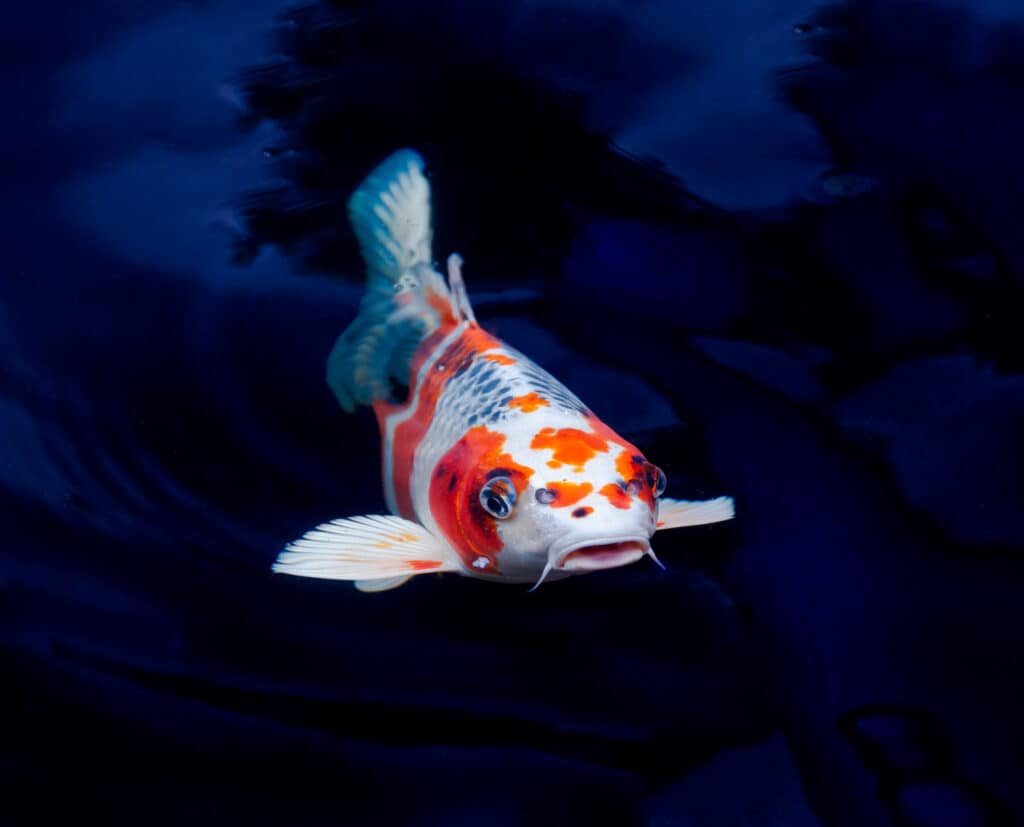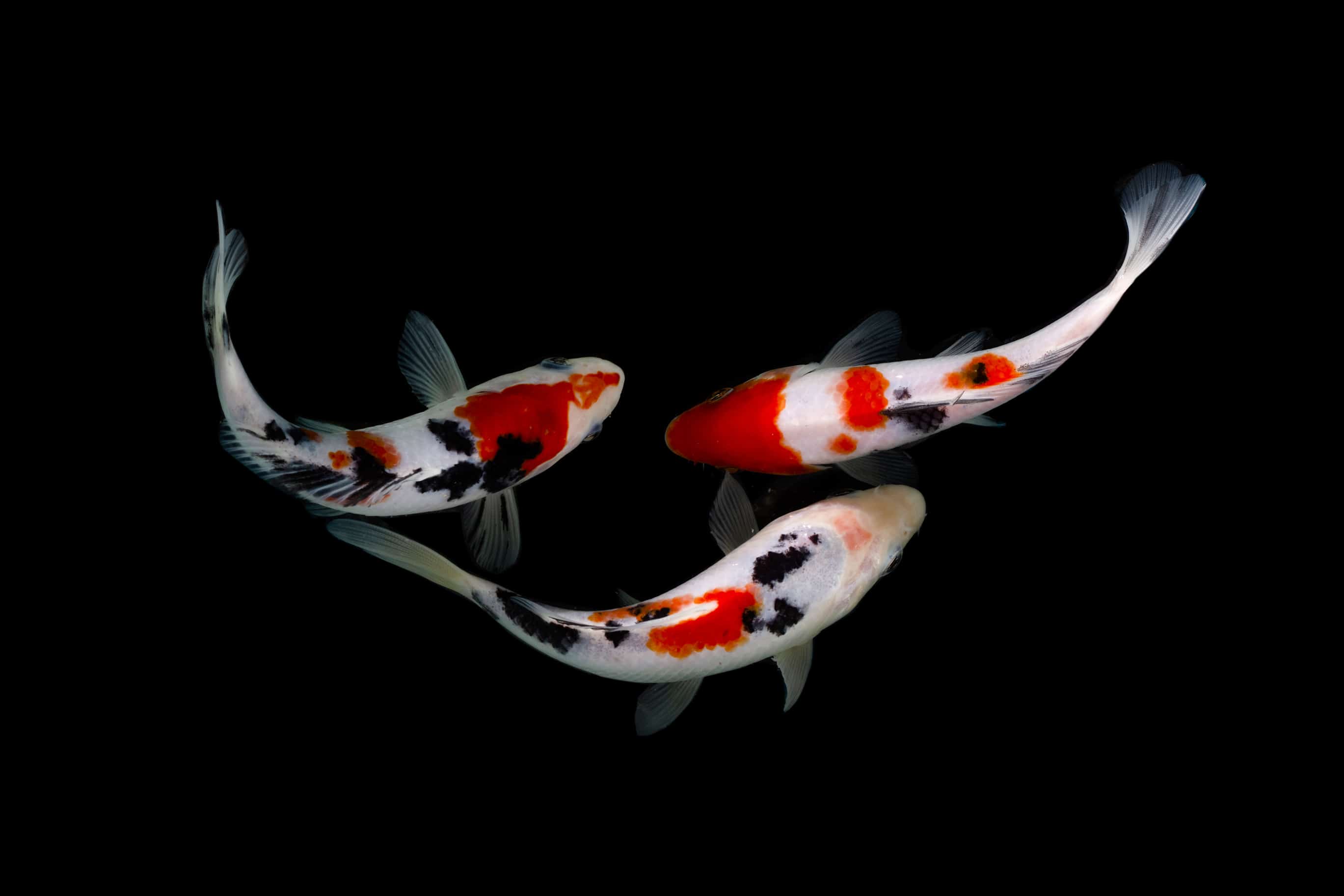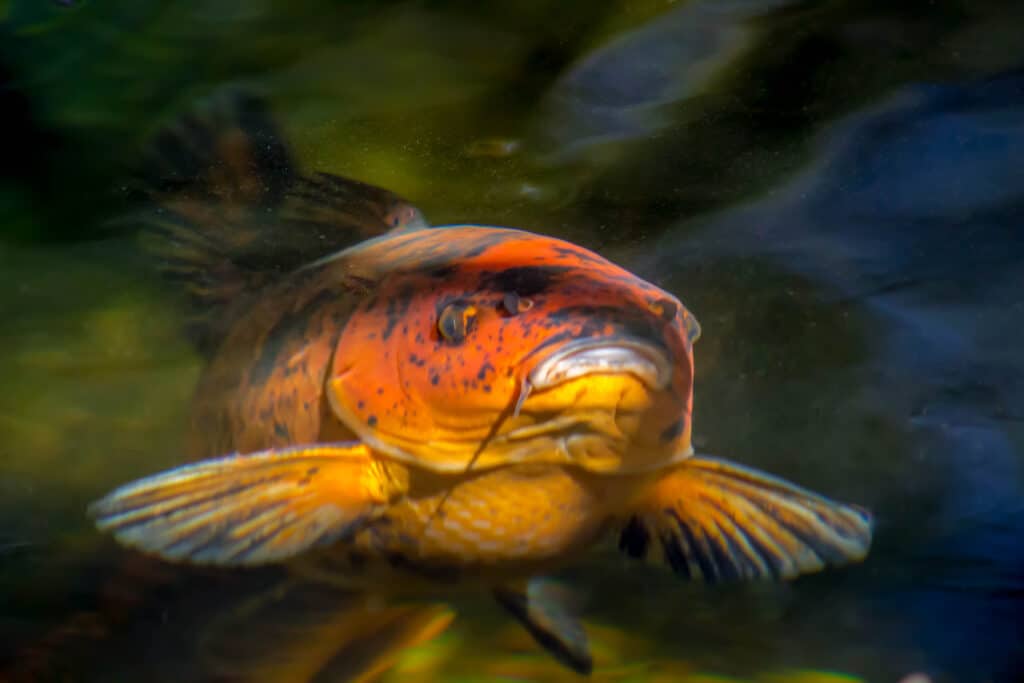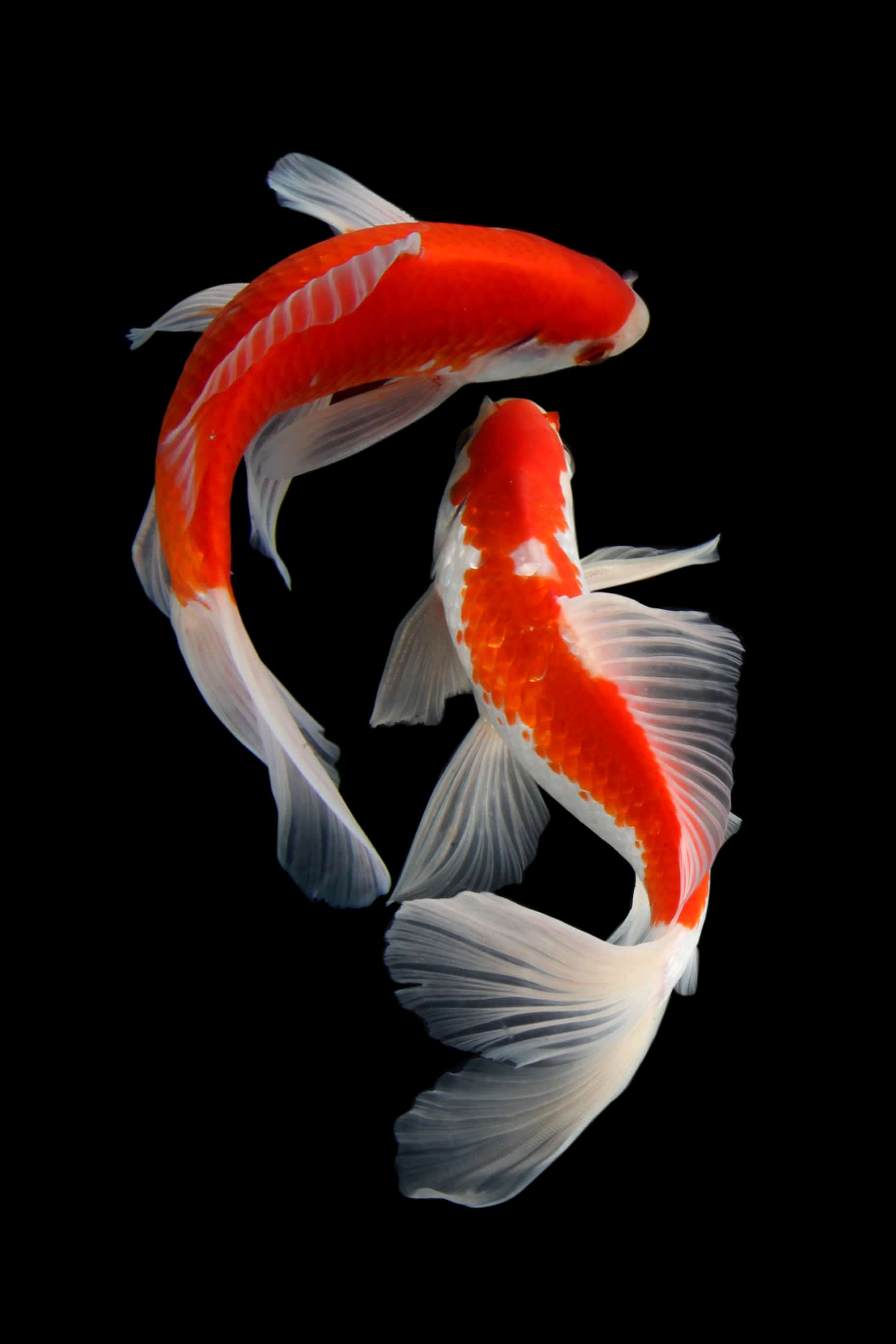
Keeping and breeding koi can be a rewarding experience, but it also comes with a unique set of challenges. For example, those looking to sell koi fish will need to determine the sex of their for-sale specimens before listing them. How can you tell if your koi fish is male or female?
To determine whether your koi fish is male or female, examine body shape, fin shape, fin color, and vent shape. Male koi have thinner bodies, pointed solid-colored pectoral fins, and concave vents. Female koi are rounder have rounded opaque pectoral fins and convex vents.
This guide will help you discover the most efficient and effective ways of determining the sex of your koi fish. You can use this information to control your koi population and provide in-depth information to potential koi buyers.
Pro Tip: If you’re tired of wasting money and making costly mistakes on the koi-keeping hobby or are thinking about buying koi fish but don’t know where to start, I strongly suggest you check out this ebook. I recently read this ebook, and it contains SO much useful information, such as:
- 3 proven steps to identify koi fish diseases
- WARNING: 3 things you should NEVER do when it comes to caring for koi
- When to seek professional help when it comes to looking after your koi
How Can You Determine Koi Gender?
Determining the sex of a koi can be challenging, as they don’t exhibit a wide range of noticeable secondary sex characteristics. That said, taking a closer look at your koi fish’s appearance can help you figure out whether they’re male or female.
You can determine a koi’s sex by doing the following:
- Examine the body shape.
- Inspect the pectoral fin shape and color.
- Study the fin color.
- Scan the vent shape.
These various anatomy parts offer clues to a koi’s sex, but some are more reliable than others. For example, koi fin color can vary depending on the particular subspecies of koi, making it a somewhat unreliable indicator of sex.
It’s also worth noting that sexually immature koi younger than two or three years old may not exhibit anatomical signs indicating their sex.
As such, you may need to wait for your koi to fully mature before attempting to determine their sex.
Examine the Koi’s Body Shape
Baby koi are almost identical, with the only differences being their scale coloration and patterning.
But as koi mature, their bodies take on a distinct shape that may indicate their sex.
Male koi tend to be somewhat thin, with a sleeker body profile than females. On the other hand, females may have a thicker, rounder abdomen. These differences in body shape become more exaggerated as females develop mature eggs in the springtime.
Inspect the Koi’s Pectoral Fin Shape and Color
A koi’s pectoral fins, located closest to the head, may help you determine its sex. That’s because male and female pectoral fins tend to exhibit two noticeable physical differences, including shape and color.
Male koi pectoral fins are slightly longer than those belonging to females. They also tend to slope toward a sharper point than rounded female pectoral fins.
Additionally, male fins are often solid-colored nearest the body with slight opaqueness near the outer edges of the fin. But female pectoral fins tend to be far more translucent, becoming nearly invisible about halfway out from the body.
Still, koi shape and size can vary depending on koi subspecies, age, and feeding habits. These factors can make it challenging to determine koi sex based on body and pectoral fin shape.
Fortunately, checking your koi’s vent is a surefire way to determine whether they’re male or female.

Scan the Koi’s Vent Shape
If you’re comfortable handling your koi, you can determine sex by picking up a koi and flipping it upside down. Then, with the belly facing you, you’ll be able to locate the fish’s vent. The vent is a small opening situated directly above the anal fin that leads to the internal gonads or sex organs.
In males, the vent is curved inward (concave) and tends to be gray, white, or flesh-colored. In females, the vent is curved outward (convex) and is often pink or red. Remember, you’ll need to wait until your koi are at least two or three years old to use the vent method of determining sex.
Other Ways To Determine the Sex of Your Koi
In addition to analyzing the physical characteristics of your koi fish, you can also observe their behavior to determine sex.
Here’s how koi keepers can tell whether a koi fish is male or female:
- Look for signs of pregnancy.
- Observe koi mating behaviors.
Naturally, signs of pregnancy are some of the most apparent indicators of a fish being female. However, mating behaviors can also give you a clue about the sex of individual koi fish.
Let’s explore both of these alternative sexing methods to discover how they work and what you’ll want to watch.
Look for Signs of Pregnancy

Koi tend to breed during the spring and summer seasons when water temperatures are relatively warm, about 65℉ to 75℉ (18℃ to 24℃). Directly before the koi mating season, female koi fish grow far rounder and more prominent, a significant indicator that they’re full of fertile eggs.
Female koi can produce about 300,000 eggs each year, all of which are stored internally until it’s time to spawn. So, if you notice that some of your koi grow rounder during the spring season, there’s a good chance that you’re observing female koi.
And the thinner fish sticking closely to these rotund fish are most likely males looking to mate.
Observe Koi Mating Behaviors
In addition to physical signs of pregnancy, there are a handful of mating behaviors that can help you determine a koi’s sex. Naturally, you’ll want to look for these behaviors during the spring season when temperatures are within range for egg-laying.
The first behavior to look for is increased appetite. Female koi may eat far more heartily before releasing eggs. They might also stick to their enclosure’s deeper and heavily vegetated regions.
Male koi may follow females around the pond, bumping into them and rubbing against their sides. This behavior indicates a male koi’s readiness to fertilize a female koi’s eggs.

Conclusion
There are several ways to determine the sex of a koi fish. One of the most effective ways is to examine your koi’s body shape, fin shape, and fin coloration.
For example, males tend to be thinner than females. Male koi also have angular solid-colored pectoral fins, while female koi have rounded semi-transparent pectoral fins. Additionally, male koi have concave vents while female koi have convex vents.
Appearance isn’t the only way to determine whether a koi is male or female. You can also look for signs of pregnancy and observe mating behaviors to help determine a koi’s sex.
References
https://pondinformer.com/koi-sex-identification/
https://lochnesswatergardens.com/blogs/pondblog/determining-the-sex-of-your-koi
https://www.thepondguy.com/learning-center/how-can-i-tell-if-i-have-male-or-female-koi/


